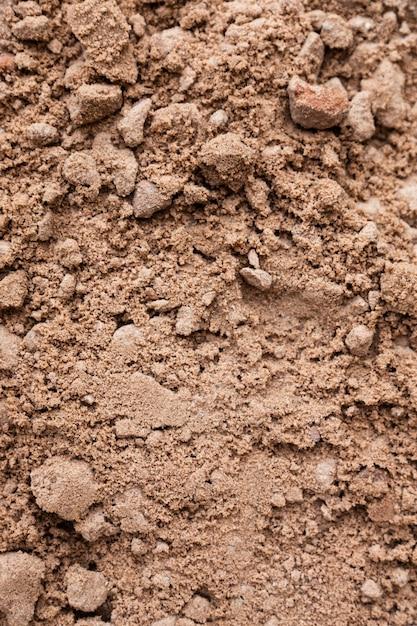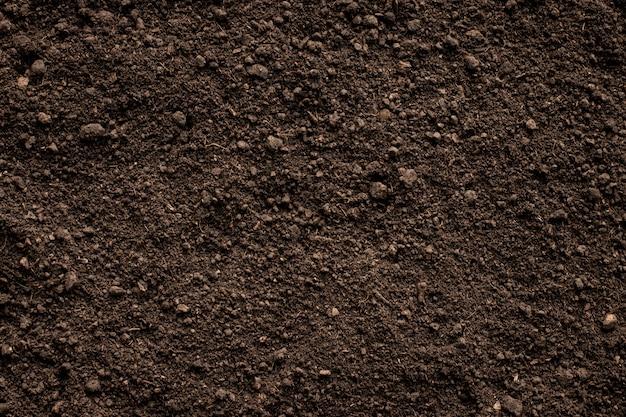When admiring a beautifully landscaped garden or observing a lush, fertile field, we often don’t pause to consider the remarkable diversity of soils beneath our feet. Yet, the colors of soil, such as clay and loam, can provide valuable insights into its composition and fertility. In this blog post, we will delve into the intriguing world of clay and loam soil, exploring their colors, characteristics, and the secrets they hold.
As we journey through the realm of soil, we’ll answer burning questions like, “What are the 5 types of clay?” and “What grows best in clay loam soil?” Delving further, we’ll unravel the mysteries surrounding the darkest and purest clay soil, the differences between terracotta and clay, and the three main types of soil. We’ll also explore the advantages and disadvantages of loam soil, and how to determine whether your soil is loam or not. So, let’s dig in and uncover the captivating colors and qualities beneath our feet!
What is the Color of Clay and Loam Soil
One of the fascinating aspects of soil is its color. Have you ever wondered why clay and loam soils come in different hues? Well, today we are going to explore the wonderful world of soil colors and unravel the mystery behind the shades of clay and loam soils. Let’s jump right in!
The Spectrum of Clay and Loam Soil Colors
When it comes to clay and loam soils, there is no shortage of colors to behold. From vibrant reds to earthy browns, these soils exhibit a wide range of hues that can be both mesmerizing and puzzling. So, why does soil have different colors? The answer lies in its composition and the presence of certain minerals.
The Role of Minerals
Minerals play a crucial role in determining the color of clay and loam soils. For instance, the presence of iron oxide can give the soil a reddish tint, while organic matter can result in a darker brown color. Additionally, the level of water content and the degree of soil development can further influence the overall coloration.
Red Clay and the “Terracotta” Effect
Ah, red clay – a color that has become synonymous with pottery and terracotta tiles. This distinct hue is a result of iron oxide, also known as rust. The iron in the soil undergoes oxidation, causing the reddish color to dominate. So, the next time you encounter some vivid red clay, embrace the “terracotta” effect and appreciate the beauty that nature has created.
A Rainbow of Loam Soil Colors
Unlike clay soil, which tends to lean towards a reddish spectrum, loam soil can surprise you with its diverse color palette. Ranging from light sandy yellows to rich dark browns, loam soil offers a rainbow of colors for your sensory delight. The varying shades depend on factors such as the ratio of sand, silt, and clay, as well as the type and amount of organic matter present.
The Dark Side: Black Loam Soil
Ah, black loam soil – the mysterious dark knight of the soil world. This exceptionally fertile soil owes its ebony hue to the abundant organic matter it contains. As plants and organisms decompose, they release organic compounds that enrich the soil and give it that distinctive black color. So, if you come across black loam soil, rest assured that it’s a treasure trove for your green thumb!
Unleash Your Inner Sherlock: Soil Color and Moisture Content
Did you know that soil color can provide clues about its water content? It’s true! By observing the color, you can get an idea of the moisture levels present in the soil. Darker soil may indicate higher moisture content, while lighter soil may suggest drier conditions. So, soil color is not only aesthetically pleasing but can also unveil secrets about the environment and climate.
The Kaleidoscope of Soil Colors
In conclusion, clay and loam soils exhibit a kaleidoscope of colors, each with its own story to tell. From the mesmerizing reds of clay to the vibrant array of hues found in loam soils, the colors of the earth are a testament to the wonders of nature. So, the next time you find yourself standing atop a patch of soil, take a moment to appreciate the intricate mix of minerals and organic matter that give it life and color.
Now that we’ve unraveled the secrets of clay and loam soil colors, let’s venture into the next exciting chapter – the textures and composition that make these soils so unique!
FAQ: What Is The Colour Of Clay and Loam Soil
Clay and loam soil are two common types of soil with distinct characteristics. In this FAQ-style guide, we’ll explore various aspects of clay and loam soil, including their colors, types, agricultural uses, and more. So let’s get down and dirty with these fundamental soil types!
What are the Color of Clay and Loam Soil
Both clay and loam soil come in a range of colors, each indicating specific characteristics. Here’s a breakdown of the colors you may come across:
Clay Soil Colors
Clay soil exhibits various colors, depending on the mineral content it contains. Some common clay soil colors include:
1. Red Clay
Red clay gets its striking color from iron minerals present in the soil. This vibrant hue can range from reddish-brown to deep rust, adding a dash of warmth to your landscape.
2. Yellow Clay
Yellow clay owes its color to the presence of hydrated iron oxide. This pale or bright yellow hue is a common sight, especially in areas with drier climates.
3. Gray Clay
Gray clay tends to appear in areas that experience excessive water retention. This cool-toned color can range from light gray to a more bluish-gray shade.
Loam Soil Colors
Loam soil, a balanced mixture of sand, silt, and clay, generally exhibits darker colors. Here are a few common loam soil colors:
1. Dark Brown Loam
Dark brown loam is often associated with high organic matter content. This nutrient-rich soil is commonly sought after for gardening and agricultural purposes.
2. Black Loam
Black loam is characterized by its deep, rich color, indicating a high concentration of organic matter. This fertile soil type is highly desirable for cultivating thriving crops, making it a gardener’s dream.
How Can You Identify Clay and Loam Soil
Identifying clay and loam soil can be done through simple yet effective methods. Here’s how you can determine their types:
Clay Soil Identification
To identify clay soil:
1. Texture Test
Clay soil feels sticky and smooth when wet, resembling modeling clay. When dry, it forms hard clumps that are difficult to break apart.
2. Ribbon Test
Take a handful of moist clay soil and roll it between your fingers. If it forms a ribbon-like thread without breaking, it’s likely clay soil.
Loam Soil Identification
Identifying loam soil involves the following checks:
1. Texture Test
Loam soil has a crumbly texture that feels granular yet holds its shape when squeezed. It offers a perfect balance between drainage and water retention.
2. Water Absorption Test
When watered, loam soil absorbs moisture while allowing excess water to drain freely. This characteristic ensures optimal conditions for plant growth.
What Are the Advantages and Disadvantages of Clay and Loam Soil
Both clay and loam soil types have their pros and cons. Let’s explore their advantages and disadvantages:
Clay Soil
Advantages:
- High nutrient-holding capacity, offering ample nourishment for plants.
- Retains water well, reducing the need for frequent irrigation.
- Good for growing water-loving plants, such as rice.
Disadvantages:
- Heavy and compact, making it hard for plant roots to penetrate.
- Prone to waterlogging, which can lead to root rot.
- Susceptible to cracking and erosion in dry conditions.
Loam Soil
Advantages:
- Well-balanced texture, providing excellent drainage and water retention.
- Rich in organic matter, offering vital nutrients to plants.
- Ideal for a wide variety of crops and gardens.
Disadvantages:
- Requires regular maintenance to preserve its structure.
- Susceptible to leaching, which can wash away nutrients.
- More expensive to amend and improve compared to other types of soil.
What Grows Best in Clay Loam Soil
Clay loam soil, a blend of clay and loam, offers a unique balance of characteristics. Here are some plants that thrive in clay loam soil:
1. Tomatoes
Clay loam soil provides the necessary water retention for tomatoes while preventing excessive saturation that may lead to root rot.
2. Beans
Beans flourish in clay loam soil due to its excellent nutrient-holding capacity, supporting healthy growth and bountiful yields.
3. Marigolds
Marigolds thrive in clay loam soil, benefiting from its ability to retain moisture and provide essential nutrients.
4. Lettuce
Clay loam soil’s balanced texture ensures that lettuce receives adequate drainage and moisture, promoting optimal growth and crisp leaves.
5. Squash
Squash plants respond well to clay loam soil, as its water retention properties help sustain the plant during dry periods, contributing to successful fruit development.
Understanding the colors, characteristics, and uses of clay and loam soil is essential for any gardening enthusiast or agricultural practitioner. Armed with this knowledge, you can now confidently identify these soil types, harness their advantages, and cultivate a flourishing garden or farmland. So go ahead, dig deep, and make your patch of earth thrive with the perfect soil!

